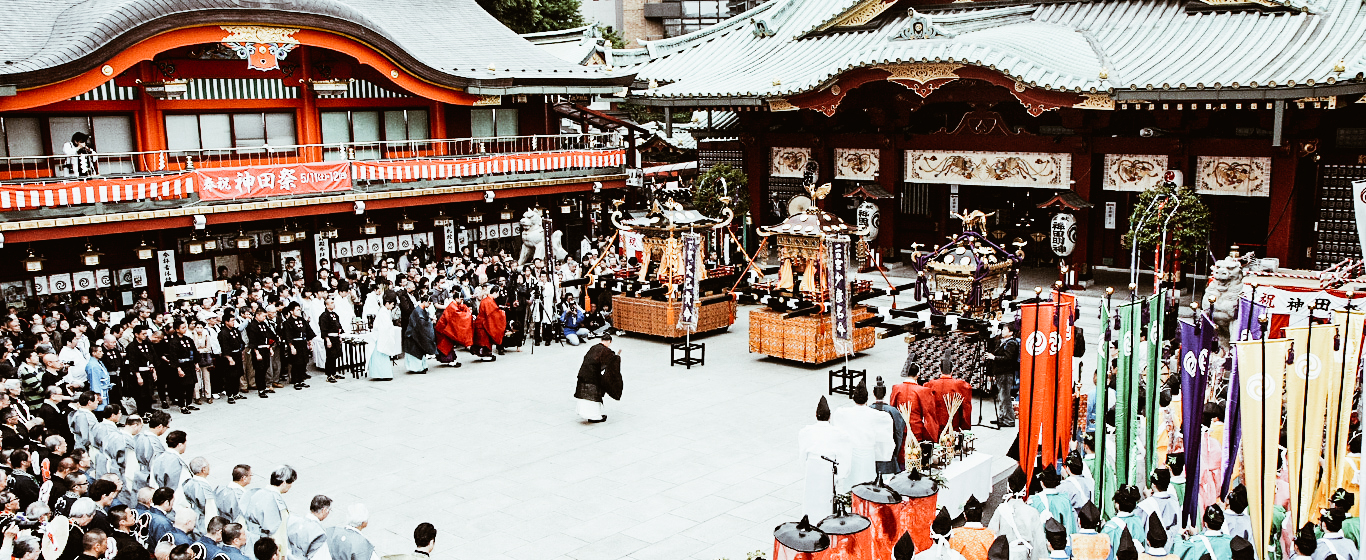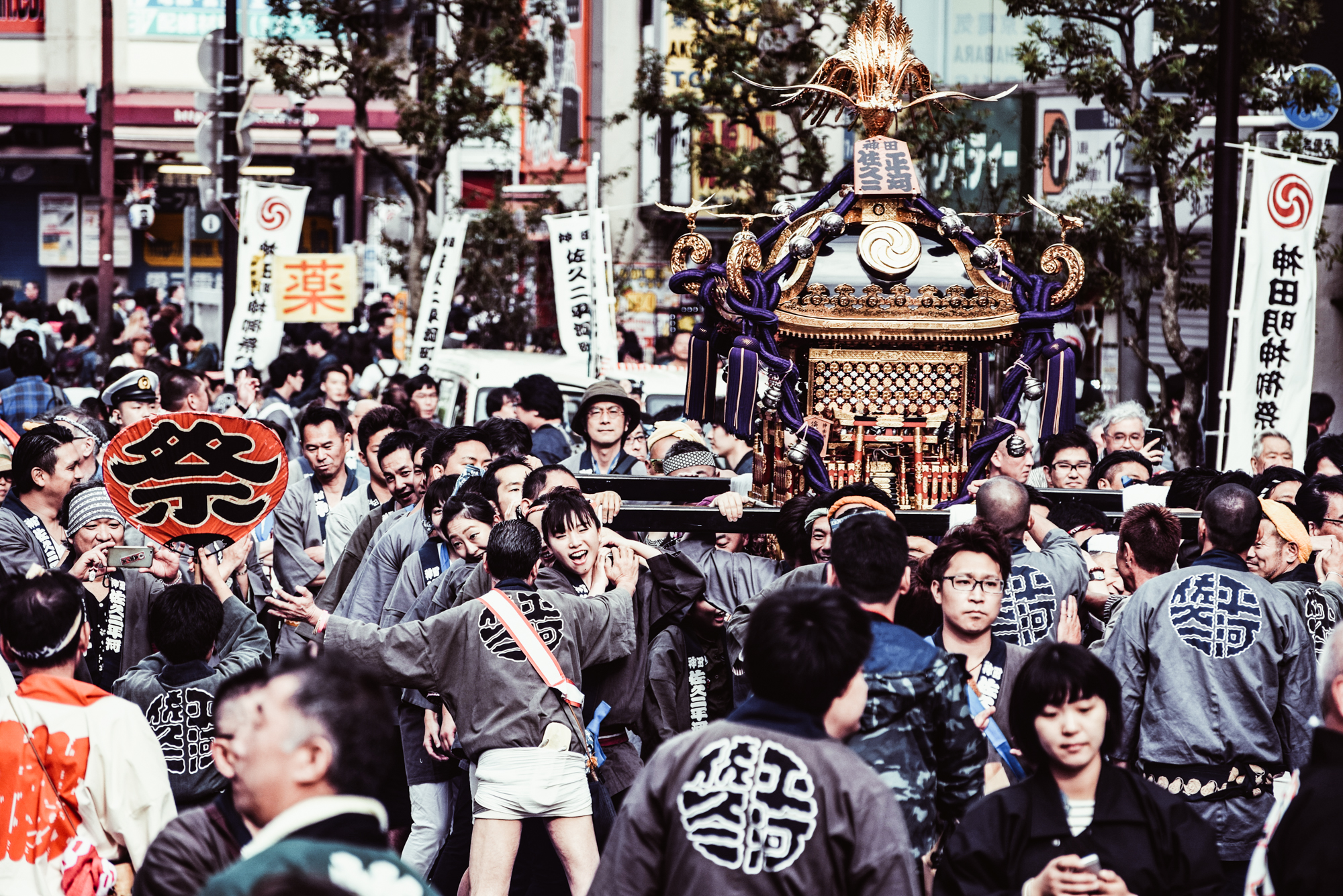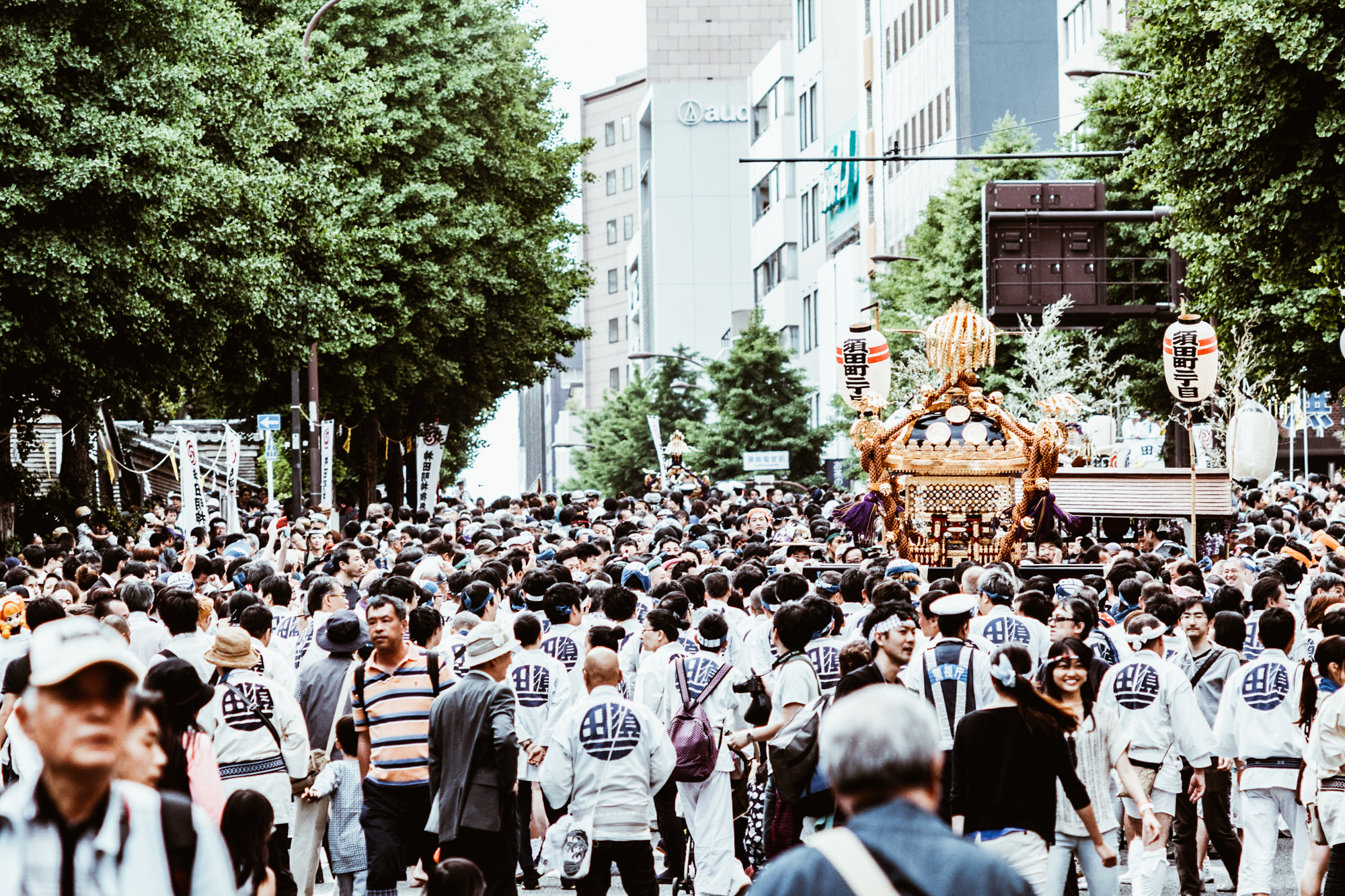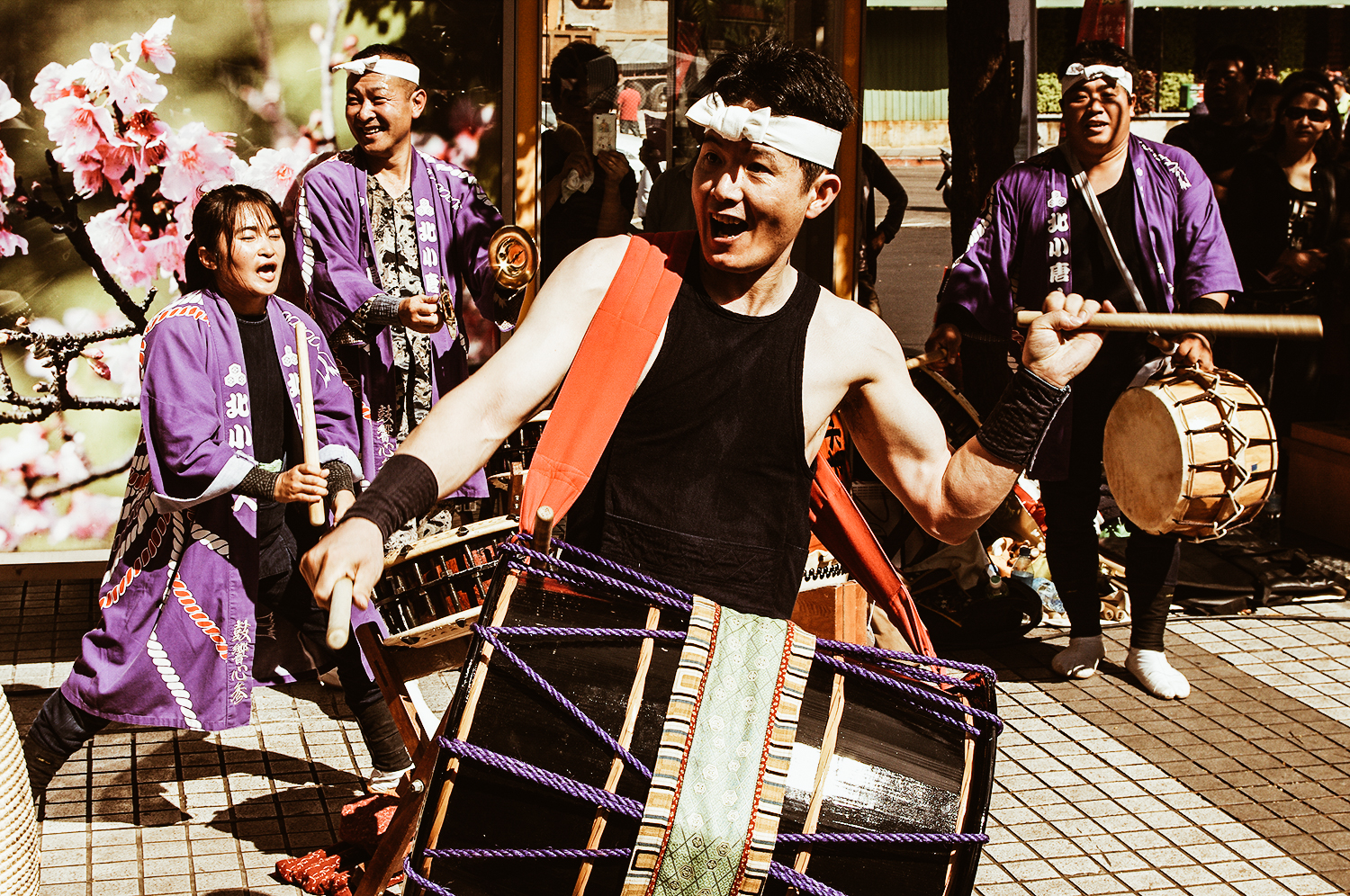Japan Tradition: Kanda Matsuri
The festival held on odd-numbered years

photo credits: dydo-matsuri.com
In the middle of May on every odd-numbered year, the Kanda Matsuri (神田祭) takes place in Tokyo’s Kanda. Together with the Sanno Matsuri and the Fukagawa Matsuri, Kanda Matsuri is one of the three most important Shinto festivals being held in Tokyo. It is also one of the three largest festivals of Japan together with Osaka’s Tenjin Matsuri and Kyoto’s Gion Matsuri.
The origin of Kanda Matsuri dates back to the Edo Period (1603-1867), when the shogun Tokugawa Ieyasu ruled over Edo, now modern day Tokyo. It is for this reason that Kanda Matsuri is also sometimes known as Tenka Matsuri (Tenka meaning shogun).
The celebration of this festival also doubled as a demonstration of prosperity under the new regime.


photo credits: xin beitou, Atsushi Ebara
At the same time, the Sanno Matsuri took place to celebrate the new political center and its rulers. Because of the long and extravagant preparations, competition between the two festivals grew, and eventually, it was decided to celebrate them in alternate years. Under this new rule, Kanda Matsuri was to be celebrated in the middle of May on odd numbered years , while the Sanno Matsuri would be celebrated in the middle of June on even numbered years.
Today, Kanda Matsuri is celebrated in honour of the gods residing in the Shinto shrine called Kanda Myojin that can be found nestled among modern buildings in one of the most exclusive neighbourhoods in Tokyo, Chiyoda ward. The shrine is dedicated to 3 deities: Daikokuten, the god of good harvest and matrimony, Ebisu, the god of fishermen and businessmen and Taira no Masakado, a revered samurai of the 10th century who was deified.


photo credits: rove.me, bill ben
Celebrating prosperity and good fortune
Like most other festivals, shinto rites are an essential part of the preparations. On the eve of the main procession, the kami (gods) of the shrine are invited to enter the three finely decorated mikoshi (portable shrines) through these rituals. At 8 a.m. on the day of the festival, these mikoshi are paraded through the streets of Kanda, continuing down to Nihonbashi, followed by Otemachi, and finally Akihabara, before returning to the temple at around 7 p.m. This procession is typically accompanied by an immense crowd of people, along with musicians, priests riding on horseback and many other participants wearing colorful, traditional clothes.


photo credits: nlgwest , Kemy Shibata
At the same time, there is a smaller three-hour long secondary procession being held. This is attended by men on horseback dressed as samurai, characters from folk stories, musicians, and dancers who depart from Arima Elementary School in the early afternoon and proceed north towards the Kanda Myojin shrine.
The next day following the festival is dedicated to the procession of mikoshi from various neighbourhoods in the Kanda and Nihonbashi district. Each of them contains an ujigami, guardian deities who, on this occasion, are housed in mikoshi to bless the residents of the area as they are paraded through the streets.

photo credits: Eugene Kaspersky
Many small curiosities
Those who were born and raised in Edo were called “Edokko”. Edokko had a peculiar personality and they were said to be very open and cheerful people. All these characteristics were, and still are, reflected in the Kanda Matsuri, a festival full of energy.
The procession with all its main elements also recalls the celebrations for Tokugawa’s victory in the battle of Sekigahara, which cleared the path to the shogunate that led to a long period of peace and prosperity in Japan. Originally, townspeople would dress up and give thanks to the shrine through lavish performances of Noh theater.


photo credits: tokyoexcess.blogspot.it, xin beitou
During the Edo period, the parade with its beautiful decorations would pass by Edo Castle, giving common people a rare chance to enter its grounds.
Most of the original floats, which had been used since the early days of the festival, were destroyed in the Great Kanto Earthquake of 1923 and in the bombing of WWII.


photo credits: viajejet.com, fastjapan.com
Share this:
- Click to share on Facebook (Opens in new window)
- Click to share on Twitter (Opens in new window)
- Click to share on Tumblr (Opens in new window)
- Click to share on Pinterest (Opens in new window)
- Click to share on Telegram (Opens in new window)
- Click to share on WhatsApp (Opens in new window)
- Click to share on Reddit (Opens in new window)
- Click to print (Opens in new window)






